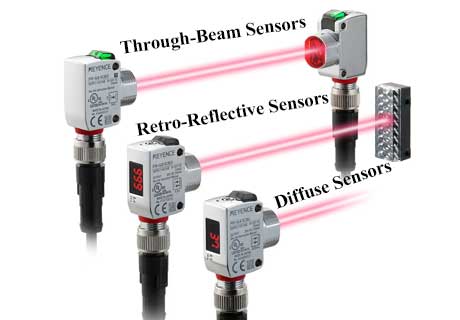How Do I Choose a Photoelectric Sensor?
Key Takeaway
Choosing the right photoelectric sensor involves understanding application requirements such as the distance, material type, and environmental conditions. Considerations include the sensor’s range, response time, size, Output and whether an analog or digital output fits the application needs.
Initial Considerations for Selection
Selecting the right photoelectric sensor can be a pivotal decision in the setup of industrial automation systems. These Photo Switches are critical for ensuring efficiency and precision in operations, and their correct selection ties directly into the success of production processes. Whether you’re new to this field or brushing up on essentials, understanding how to pick the best photoelectric sensor for your needs is key.
Before diving into the specifics of photoelectric sensor types and their functions, it’s important to outline your primary requirements. Consider what you need the sensor to do. Are you looking to detect the presence of objects, or do you need to measure distances? Will the sensor be used in a clean and controlled environment, or will it face the challenges of a harsh industrial setting? Starting with a clear understanding of the intended use will guide your selection process and ensure you choose a sensor that fits your operational needs.

Understanding the Technical Specifications
Photoelectric sensors come with a variety of technical specifications that cater to different functional needs. Key specs include the type of light source (infrared, LED, laser), Sensing range, response time, output and sensitivity settings. Each spec has a direct impact on the performance of the sensor in different environments and applications. For instance, sensors with a longer range are typically needed in large industrial spaces, while those with faster response times are ideal for high-speed processes.
It’s crucial to match these specifications with your operational requirements. Understanding the technical jargon can be daunting, but it’s essential for making informed decisions that align with your system’s needs.
Environmental Factors to Consider
The environment where the sensor will be installed plays a critical role in your selection process. Factors such as the presence of dust, moisture, extreme temperatures, and potential physical obstructions should all be considered. For harsh environments, you might need sensors that are specifically designed to be rugged and resistant to environmental hazards.
For example, in a woodworking facility where dust is prevalent, opting for a sensor with a higher IP rating for dust and water resistance would be prudent. Similarly, in outdoor applications, choosing sensors capable of handling varying weather conditions is vital.
Application-Specific Sensor Requirements
Each application might have unique requirements that influence sensor choice. For instance, in a packaging line, you may need sensors that can detect transparent or highly reflective materials, which would lead to choosing a model with specialized capabilities such as polarized retro-reflective sensors.
It’s also important to consider the installation space and the physical alignment of the sensor with the target. In constrained spaces, compact sensors with adjustable beams might be necessary. These application-specific requirements are crucial in tailoring your choice to provide optimal performance.
Best Practices in Sensor Selection
Adhering to a few best practices can greatly simplify the selection process. Always consult with experienced engineers or sales representatives who can provide insights based on similar applications. Utilizing trials or demos to see how a sensor performs under your specific conditions can also be incredibly helpful.
Additionally, consider future needs and potential scaling of your operations. Choosing sensors that can be easily integrated with broader automation systems via standard interfaces ensures flexibility and expandability.
Conclusion
Choosing the right photoelectric sensor doesn’t just impact immediate operational efficiency—it also affects long-term productivity and maintenance costs. By thoroughly understanding your needs, the technical specifications, environmental conditions, and application-specific requirements, you can make informed decisions that ensure optimal performance and reliability. Remember, the goal is not just to select a sensor but to choose a solution that enhances your operations and provides lasting benefits.
